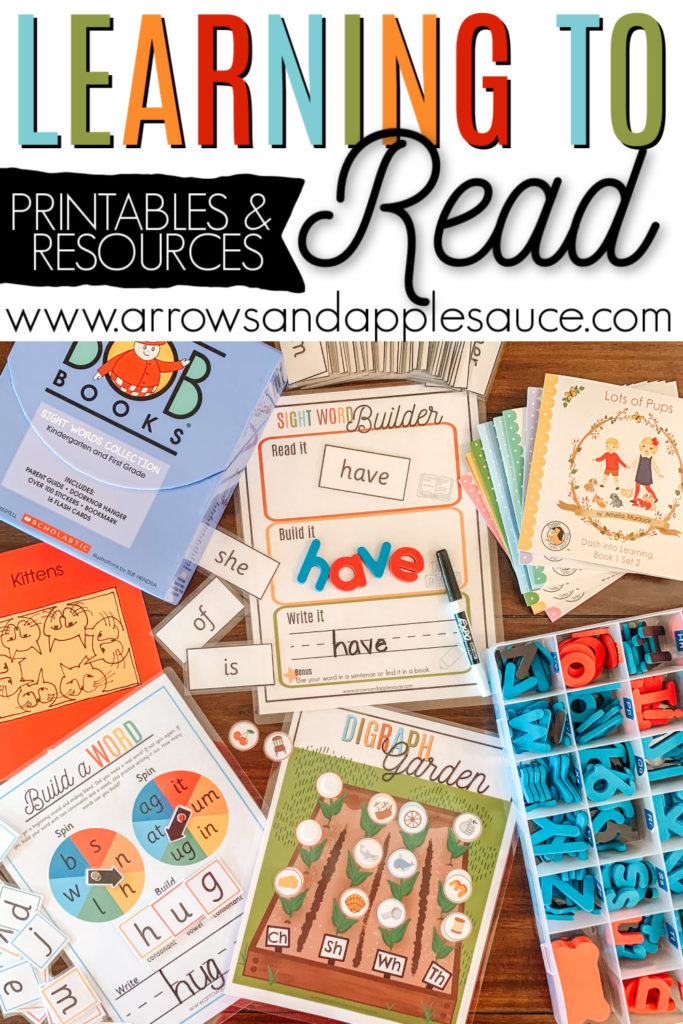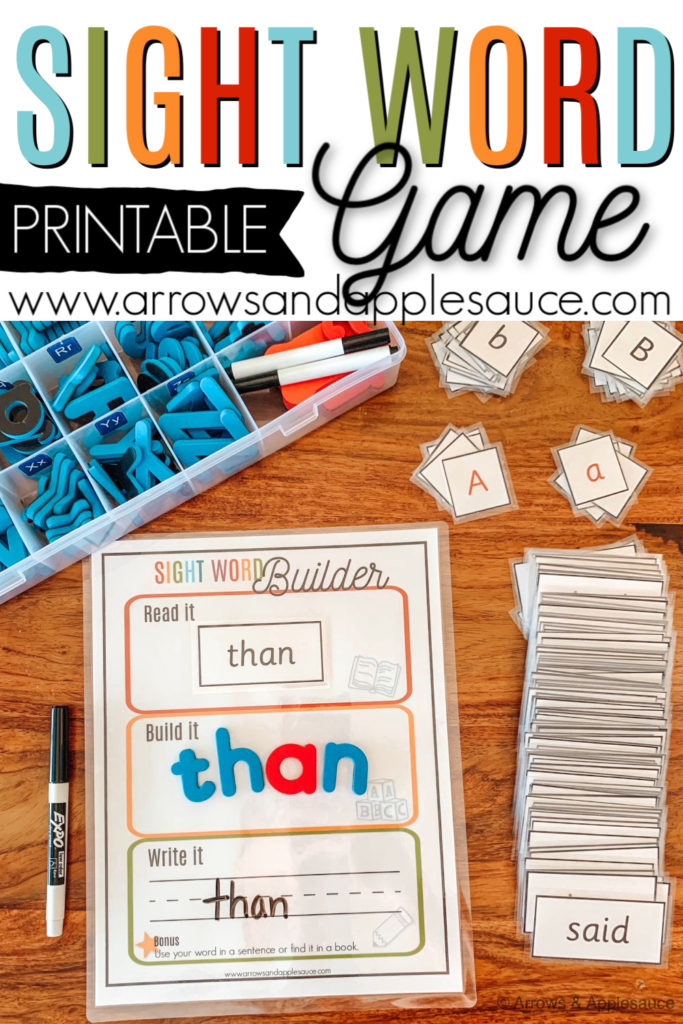This post contains affiliate links. If you follow one of my links I earn a small commission at no extra cost to you. All opinions are completely my own. Thank you for supporting my blog!
I wish you could have seen Squeaks face when I told her that, after learning to read, she could read ANY book in the world. Priceless. Pure excitement.
Squeaks had her alphabet down for quite a while and had started asking about rhyming words, always getting excited when she found similar sounds. So I asked her if she wanted to learn to read and she said yes!
Keep in mind that Squeaks was ready and excited to start the process of learning to read. This is a necessity in my opinion. If you try to teach a child who isn’t excited or at least interested in the idea of reading, it will just be frustrating for you both. This could be anywhere from age 4 or 5, to age 8 or 9. Every child will be different.
Since we started the process about a year ago, we’ve come across some learning tools that have been super helpful and fun!
1. Reading Curriculum
The Ordinary Parent’s Guide to Teaching Reading is exactly what it sounds like. It makes teaching reading super straight forward and easy for everyone! It literally gives a script of what you need to say. (Click here to check out all of our kindergarten curriculum picks.) The lessons are short, maybe a page or two, and there is no time table. Each lesson is numbered, but you can go back and review or work on a particularly difficult lesson as many times as you need. It’s very phonics oriented. There are a few sight words also, but it mostly works on letter sounds and phonetic spelling. It has been the perfect road map for us. It works great by itself, but it’s also super easy to supplement with other reading tools, like the ones below. 😉
2. Sight Word Builder
Every once in awhile The Ordinary Parent’s Guide will suggest ways to help review a concept. I took this as an opportunity to build an activity of our own! I wanted a condensed but fun way to incorporate reading, sounding out, and spelling new words as Squeaks learned them. And so my Sight Word Builder game was born!
In the top section of the game the new reader sees the word and has the chance to sound it out. The game comes with flashcards of the top 100 most used words in the English language. It’s also super easy to create your own cards, or once the game is laminated, mom/dad/teacher could write the practice word with a dry erase marker.
The next section gives your little one the opportunity to build the word. The game also comes with a full set of alphabet tiles for this purpose, but we also really enjoy this magnetic letter set. I especially love that the vowels are a separate color and it includes multiple of each letter in both upper and lowercase.
The last section of the game is for penmanship practice and reinforcement. The new reader gets to practice writing their word as they sound out each letter one more time. Again, once the game is laminated, this can be done with a dry erase marker, which is totally thrilling for the average five year old (or maybe it’s just my kids? lol!)
Get your Sight Word Builder here!
3. Early Reader Books
BOB books are my absolute favorite early readers! They have been a huge help to Squeaks while learning to read. I love that they have sets for each reading level as well as sight word readers. As we work through our loop schedule, I have Squeaks read them multiple times until she can read them without mistakes. That equals to about two books every other week (one from her level two set and one from her kindergarten sight word set). She even sometimes wants to read them on days we don’t have them scheduled. Taking them out to show off her reading skills to the grandparents is a huge confidence boost for her as well, and it’s so cute!
We also recently came across Dash Into Reading books. We only just started using them, so I can’t give too much of a review yet, but so far we really enjoy them. Longer stories and words make them a bit more challenging than the BOB books. We can usually only get through one every two weeks, again reading until there are no mistakes. There are two sets available and even the lowest level is a bit more challenging. The design quality and graphics are absolutely gorgeous though.
4. Captions On
This one is a bit silly, but totally helps. Turn the captions on when your kids watch TV! No, they will not learn to read using only this trick. But you should see how excited they get when they recognize a word! Being able to hear and see the word together over and over in a conversation is great practice. Bonus points if you use this little tip with an educational show like Super Why.
5. Games
Awhile back I did a short series on our favorite educational board games. Well, we’re still at it and loving it! In addition to the reading/alphabet games I wrote about in the series, I’ve added Alphabet Island, a CVC word builder game, and a digraph game that I created.
We love using my CVC Word Builder while learning to read!
To be totally honest, I didn’t know what a CVC word or a digraph was until I started homeschooling, but isn’t that one of the perks?! Learning alongside your children!
CVC stands for consonant, vowel, consonant. Words like cat, sit, run. The very first words little ones learn to sound out.
With my Word Builder game, your kiddo spins a wheel to get the beginning consonant sound, then a second wheel to get the ending vowel consonant blend. Every once in awhile it creates a nonsense word that gets a good giggle before we spin and create a real word.
Next, they get the opportunity to build the word using letter tiles that are included with the game. After laminating, I chose to use velcro dots to hold these in place. (Visit my supplies page to see all the resources I use to assemble games and more!)
Finally, with a dry erase marker (yay!) they get the opportunity to write out their new word! Also included with the game is a blank sheet to add your own letters and blends to. Handy if you’re working from an assigned word list or want to focus on a specific word group.
Get your C.V.C Word Builder Game here!
My newest addition to our reading game line up is my Digraph Garden Game.
Digraphs are two letters that combine to make a totally new sound (sh, th, wh, ch). My digraph game is a perfect way for beginners to practice those tricky blends. The cute garden theme is a fun bonus! Simply place each picture with the appropriate beginning digraph sound garden row. We just started using this one about a week ago and squeaks has picked these challenging blends up so quickly.
We are loving this process so much! Learning to read always seemed like such a big thing, but watching Squeaks’ excitement over mastering new skills and hearing her as she learns has been so rewarding. I hope you’ve found some helpful tips and tools here to get your excited new reader started!
Get your Digraph Garden Activity here!
Megan says
Where can I find the calendar?